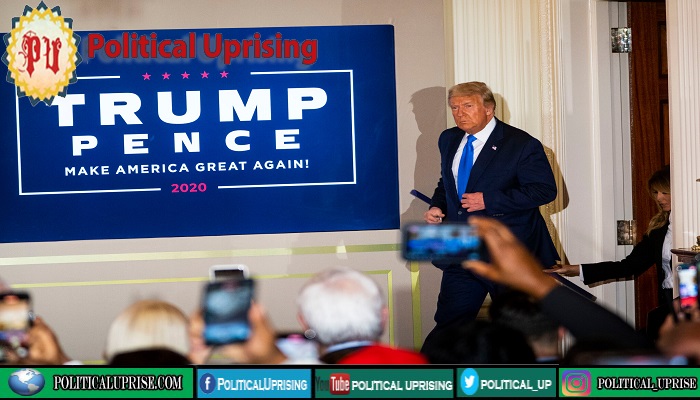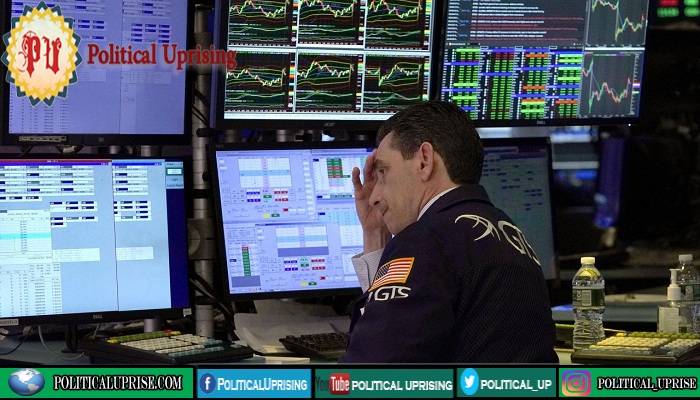Top 10 turns of destiny that set up Joseph Robinette Biden’s overtime victory and which made Donald John Trump to lost.
#1
February 26: It was the moment the first die was cast. “We know Joe,” said Jim Clyburn, the respected South Carolina congressman, “but most importantly, Joe knows us.” That ringing endorsement not only helped assure Biden of his first victory in the primaries—in Clyburn’s home state—but it also ended up powering the former veep to the top of the heap. Biden—who had been completely written off by most political mandarins—would soon become the consensus candidate. One by one his Democratic rivals would fall in line. Biden’s eventual emergence was, in fact, Trump’s worst nightmare.
The president had always considered Steady Old Joe the one opponent who could siphon off millions of voters from his working-class base. And as the primaries played out, Biden loomed larger and larger in Trump’s rearview mirror.
#2
March–April: Trump’s meandering coronavirus press conferences—during the first surge of the pandemic—reinforced the public’s view that he didn’t have a clue how to handle a crisis. Trump had assumed that by holding a televised daily briefing, right around prime time, he would be able to reassure the nation—and appeal to the electorate. But his gabfests did just the opposite.
And it didn’t help that the president, often with his foot in his mouth, essentially bigfooted and at times belittled his own medical experts. Or that the month of March saw the worst single-day dip in the Dow since Black Monday, back in 1987.
Trump’s virus denialism, the rising national death toll, and an economic downturn reminiscent of the 1930s began to cast serious shade on the president’s approval ratings.

#3
June 1: As protesters took to America’s streets to show their support for the Black Lives Matter movement, the president’s consistent calls for “law and order” placed him on the losing side of a broad and popular shift in the national consciousness on behalf of social justice.
The country had moved forward the president remained stuck in a Nixonian time warp. That gulf became all too apparent on June 1, when Trump—after law enforcement personnel used tear gas to help clear demonstrators out of the area around Washington, D.C.’s Lafayette Square—marched over to St. John’s Church and, in a gesture that alienated observers of every political stripe, posed in front of the house of worship while holding up a Bible as a prop. For some religiously observant supporters, Trump lost them in that very instant.
#4
June 20: Tulsa, in certain ways, might well have been Trump’s Alamo. Against all rhyme and reason, he decided to hold a large indoor rally—masks not required—at the city’s spacious BOK Center. Not only did a half dozen members of his advance team come down with COVID prior to the rally. Not only did the campaign create an extra outdoor area in order to accommodate the “overflow” crowds it believed would exceed the arena’s 19,000-seat capacity.
Not only did a mere 6,200 attendees actually show up—with TV networks and social media posts showing sparse (and sometimes bored) supporters in a blue wave of empty seats, but the Potemkin facade of the whole enterprise—not the president’s message—became the story.
People in Tulsa, all along, had been worried about COVID and resisted being packed in with a large crowd. And when it was all over, Trump, reportedly “furious” at his campaign staff (the fiasco was seemingly the last straw that got campaign manager Brad Parscale fired), flew back east and, as the cameras rolled, made his famous walk of shame from Marine One.
Here, tarnished by the ignominy of Tulsa, was the candidate, distraught, his shirt collar uncharacteristically open, his tie unknotted. Indeed, that limp red tie foreshadowed the dismal four and a half months to come.
#5
August 17: The first night of the Democratic National Convention proved that Team Biden had its finger on the public pulse. First, Biden’s running mate was Senator Kamala Harris: a perfect pick on every level a would-be vice president who checked off every box as a complement to Barack Obama’s former vice president.
Harris solidified the ticket and drew widespread praise. Second, the participants in the made-for-home-viewing spectacle had pretaped or Zoomed-in their appearances, echoing the socially distanced practices that had preoccupied the electorate for much of the year. Audiences could identify with the people they saw on their laptops and their plasma screens.
The Donnie Downer narrative—that Biden was “hiding in his basement”—suddenly seemed tone-deaf. And when a young woman named Kristin Urquiza discussed the COVID-related death of her father, Mark Anthony Urquiza, viewers were mesmerized. The elder Urquiza, so his daughter explained, had decided to go out in public after the president and his surrogates had announced that it was safe to do so. Her otherwise healthy dad’s “only preexisting condition,” she announced, “was trusting Donald Trump. And for that he paid with his life.”
#6
September 3–9. It was a double whammy. First came a scoop in The Atlantic. And it caught many by surprise. The conventional wisdom had it that if any group had Trump’s back, it was the American military. Sure, the president had gotten a medical deferral for “bone spurs.” Sure, he had denigrated war hero John McCain, an Arizona icon. Sure, he had second-guessed his commanders and undermined U.S. forces with some of his quixotic and seemingly whimsical decisions.
But the president had poured colossal sums into the Defense Department. He had embraced the trappings of men and women in uniform. He had clearly relished his role as commander in chief. So there was quite an outcry when the editor in chief of The Atlantic, Jeffrey Goldberg, published an article in which he quoted administration insiders as saying that Trump had called fallen service members “suckers” and “losers.” The airwaves exploded. Angry op-ed pieces were published. And many veterans and active troops fled the president’s camp.
Six days later came news of Bob Woodward’s Rage. In an article in the Washington Post, it was revealed that the renowned journalist was about to publish a book that detailed how in the early days of the crisis, Trump had known full well that the coronavirus was “deadly stuff”—though, at the time, he’d instead chosen to inform the nation that COVID would soon dissipate.
Not only that, but Woodward had audiotapes to prove it. In one recording Trump claimed he’d kept mum about the extent of the threat because he hadn’t wanted to “panic” the country.
With the presidential conventions over and the campaigns beginning to pick up steam, the tide was turning, slowly but surely. For many the comments about “suckers” and “losers” exposed Trump’s true colors—as a loser projecting his own image onto American heroes.
The “panic” comment, meanwhile, showed that the president, when faced with a pandemic, had panicked himself. Some pro-Trump voters began to doubt the mettle of their man.
#7
September 23: The question sounded innocuous. But the answer spoke volumes. In a White House press conference, reporter Brian Karem asked the president, “Win, lose, or draw in this election, will you commit here today to a peaceful transferal of power after the election?” His response: “We’re going to have to see what happens.” Ka-ching. That was the day the penny dropped for an untold number of voters.
Here was a president who was saying aloud that he would not necessarily step aside—even if voted out of office. This was the admission of a would-be dictator. This was an augury of things to come. And for many who would mail in their ballots, vote early or by absentee, or show up in person on Election Day, theirs was a vote—crystallized on September 23—not for Biden per se, but against autocracy; a vote for the electoral process and democracy itself.
#8
September 29: Time and again, press accounts have noted that many voters made up their minds—to cast their ballots for Biden—on September 29, the evening the president and former vice president squared off for the first time. That was the night, in Cleveland, Ohio, that candidate Trump, reeking of flop sweat, had put in one of the worst performances in a contemporary presidential debate.
He’d snarled and scowled. He’d interrupted Biden and moderator Chris Wallace a whopping 128 times. He’d been fiery and petulant and, when prompted, refused to criticize the far-right Proud Boys. He’d been, in a word, unpresidential. And no wonder. Two of Trump’s debate-prep advisers were themselves famous bullies and windbags: former governor Chris Christie and former mayor Rudy Giuliani. With friends like these, Trump had been paid no favors. And some 73 million voters watched the “train wreck,” as many christened the debate.
#9
October 2: In an early-morning tweet, three days after the debate, the president who for months had downplayed the coronavirus, who had repeatedly denigrated Biden for wearing a mask, and who had served, just less than a week before, as the host of what turned out to be a super-spreader event in the White House Rose Garden—announced that he himself had come down with COVID-19.
For a certain constituency, it was the final straw: The First Denier had nevertheless ended up with the disease. How could he keep the nation safe if he couldn’t even manage to protect himself?
#10
October 5: What do they say about a long night at the opera? It ain’t over till the fat lady sings. And when did history finally decree that it was curtains for Donald J. Trump? It was the night of that most operatic of Trump’s operatic moments. It was the scene in which the president, having been discharged from Walter Reed hospital—and having taped a video in which he advised, “Don’t be afraid of [the virus]. You’re gonna beat it”—made his appearance, deus ex machina, on the White House balcony, only to rip off his mask, like an opera diva in her final act. There he was. Doomed. Looking down from the balcony. Breathing heavily. And defiant to the last.



